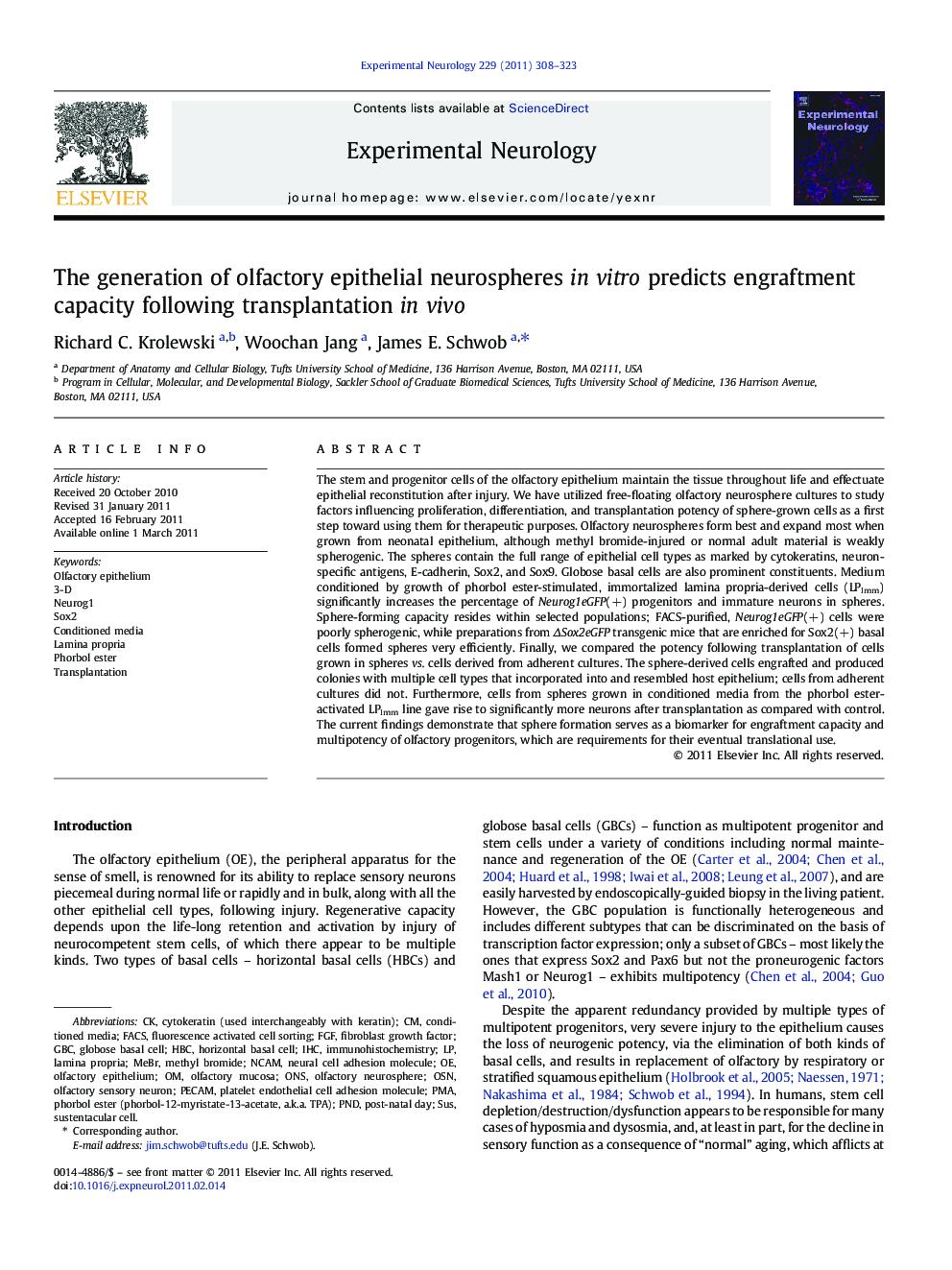| کد مقاله | کد نشریه | سال انتشار | مقاله انگلیسی | نسخه تمام متن |
|---|---|---|---|---|
| 3055807 | 1186539 | 2011 | 16 صفحه PDF | دانلود رایگان |

The stem and progenitor cells of the olfactory epithelium maintain the tissue throughout life and effectuate epithelial reconstitution after injury. We have utilized free-floating olfactory neurosphere cultures to study factors influencing proliferation, differentiation, and transplantation potency of sphere-grown cells as a first step toward using them for therapeutic purposes. Olfactory neurospheres form best and expand most when grown from neonatal epithelium, although methyl bromide-injured or normal adult material is weakly spherogenic. The spheres contain the full range of epithelial cell types as marked by cytokeratins, neuron-specific antigens, E-cadherin, Sox2, and Sox9. Globose basal cells are also prominent constituents. Medium conditioned by growth of phorbol ester-stimulated, immortalized lamina propria-derived cells (LPImm) significantly increases the percentage of Neurog1eGFP(+) progenitors and immature neurons in spheres. Sphere-forming capacity resides within selected populations; FACS-purified, Neurog1eGFP(+) cells were poorly spherogenic, while preparations from ΔSox2eGFP transgenic mice that are enriched for Sox2(+) basal cells formed spheres very efficiently. Finally, we compared the potency following transplantation of cells grown in spheres vs. cells derived from adherent cultures. The sphere-derived cells engrafted and produced colonies with multiple cell types that incorporated into and resembled host epithelium; cells from adherent cultures did not. Furthermore, cells from spheres grown in conditioned media from the phorbol ester-activated LPImm line gave rise to significantly more neurons after transplantation as compared with control. The current findings demonstrate that sphere formation serves as a biomarker for engraftment capacity and multipotency of olfactory progenitors, which are requirements for their eventual translational use.
Research Highlights
► Olfactory neurospheres form best from neonatal epithelium and contain epithelial cell types.
► Conditioned media significantly increase the percentage of Neurog1eGFP(+) cells in spheres.
► Upstream progenitor cells form spheres well, while downstream committed cells do not.
► Conditioned media significantly increases the number of neurons after transplantation.
► Sphere formation serves as a biomarker for engraftment capacity and multipotency.
Journal: Experimental Neurology - Volume 229, Issue 2, June 2011, Pages 308–323